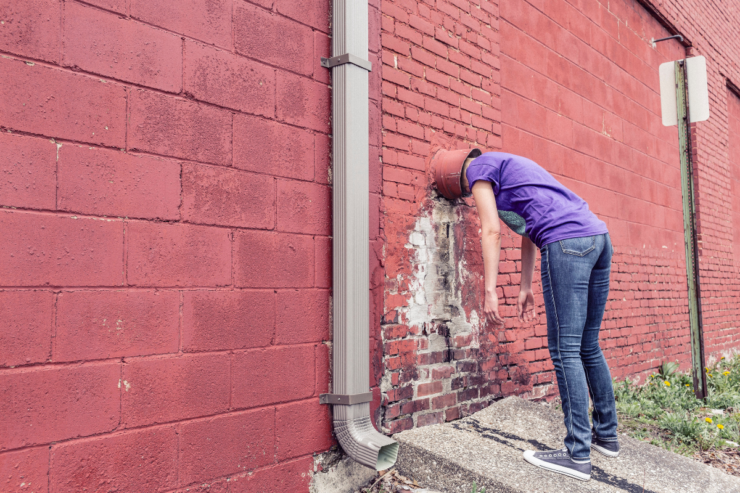Mold and dampness are common problems in almost every building. It can be found indoors and outdoors. The intensity can differ according to the location. There are certain reasons for mold and dampness.
Mold and dampness have severe effects on the quality of buildings. If you do not get rid of them on time, the bad effects can last longer and be disastrous. It does affect not only your houses and offices but also affects your health. Therefore, it is crucial to get rid of them as early as possible.
In this article, we will discuss the main reasons for it, how it can affect our health, and how to stop it from growing?
What Are the Main Reasons for Growing Mold?
Moisture is the main reason for its production. Now it comes to the minds of many people, where does this moisture come from? Well, there can be certain reasons. One of the most common places for the moisture is a bathroom.
- Poorly ventilation system in homes and offices
- Leakage of sinks, washbasins, and toilets.
- Poorly quality water pipes that start leaking with passing time.
- Leakage from roofs during rains
- Humidity in the outdoor environment
What Are the Signs of Dampness Issues?
The first sign of a leak in a wall is penetrating dampness, condensation, and ultimately rising dampness. It results in
- Strange smell
- Peeling wall paint
- Water stains on walls signify that there must be water leakage somewhere, so it’s crucial to fix it up immediately.
How Does Mold Grow In Buildings?
Molds can easily make their way everywhere. Where there is moisture, there is an oblivious chance for it to grow. Through open windows, doorways, it can enter your home or office. Because of heating and air conditioning systems, indoor spaces tend to be humid. And that is why mold grows there.
Moreover, sometimes mold attaches itself to our clothes, shoes, and other things from the air. Unfortunately, it also links to pets and makes its way into homes. It can make its way through different channels. When it enters the home or office, start to find things to grow there. It better grows on
- Paper products such as books and tissue papers
- Cardboard products such as custom boxes
- In-ceiling tiles, especially of kitchen and bathrooms
- On woody products such as wooden doors and chairs.
Molds that grow indoors most commonly are Cladosporium, Penicillium, and Aspergillus.
How Mold Can Affect Human Health?

Mold can affect human health in many ways. Mold exposure can make people sick. The most common symptoms they suffer from when exposed to mold are wheezing, stuffy nose, skin problems, and irritation in the eyes.
For some people already suffering from asthma and other breathing problems, mold exposure makes them severely sick. They may suffer from fever and breathing difficulties.
It is not necessary whether you are an asthma patient or not, and mold exposure can affect a healthy person too. There is a possibility that he will not face severe symptoms, but the frequent symptoms include itching in the eyes, throat issues, and lung problems. In these conditions, consult a doctor immediately and act accordingly.
How Can We Avoid Mold and Dampness In Houses and Offices?
The answer is straightforward. Moisture is the leading cause of its growth, so find ways to reduce the moisture level to zero. When there is no moisture, chances are very negligible of mold growth. So, first of all, try to check the source of dampness and moisture.
Inspect your homes and offices. If you find any visible mold try to remove it immediately. Then check the leakage. If there is any leakage from pipes, sinks, washbasins, and toilets, solve this matter as soon as possible. Leakage is not only the main reason behind mold growth. There could be many other possible reasons, such as
- Humidity level increases
- Improper ventilation
- Leakage roofs
- Flooding in some areas
As we have discussed earlier, mold not only ruins the beauty of your houses and offices, it is also bad for human health. It is therefore essential to get rid of it as soon as possible. If we do these things, we can avoid mold issues.
- Keep the humidity level low between 30% to 50%.
- Solve all the leakage problems in your homes and offices.
- You should keep your home and office as airy as possible
- After flooding, clean your buildings properly and dry them
- To reduce moisture, turn on the exhaust fans in the bathrooms and kitchens
- You should keep all drip trays of appliances clean
- Keep mold-prone areas clean
- Take 1 cup of bleach solution and mix it well in 4 liters of water. You can use it to clean mold from hard surfaces.
If you are looking for professional help or surveyors who can do an inspection of your house or office, you can contact Damp Detectives.
They can provide free inspection, advice, and quotes to you.






